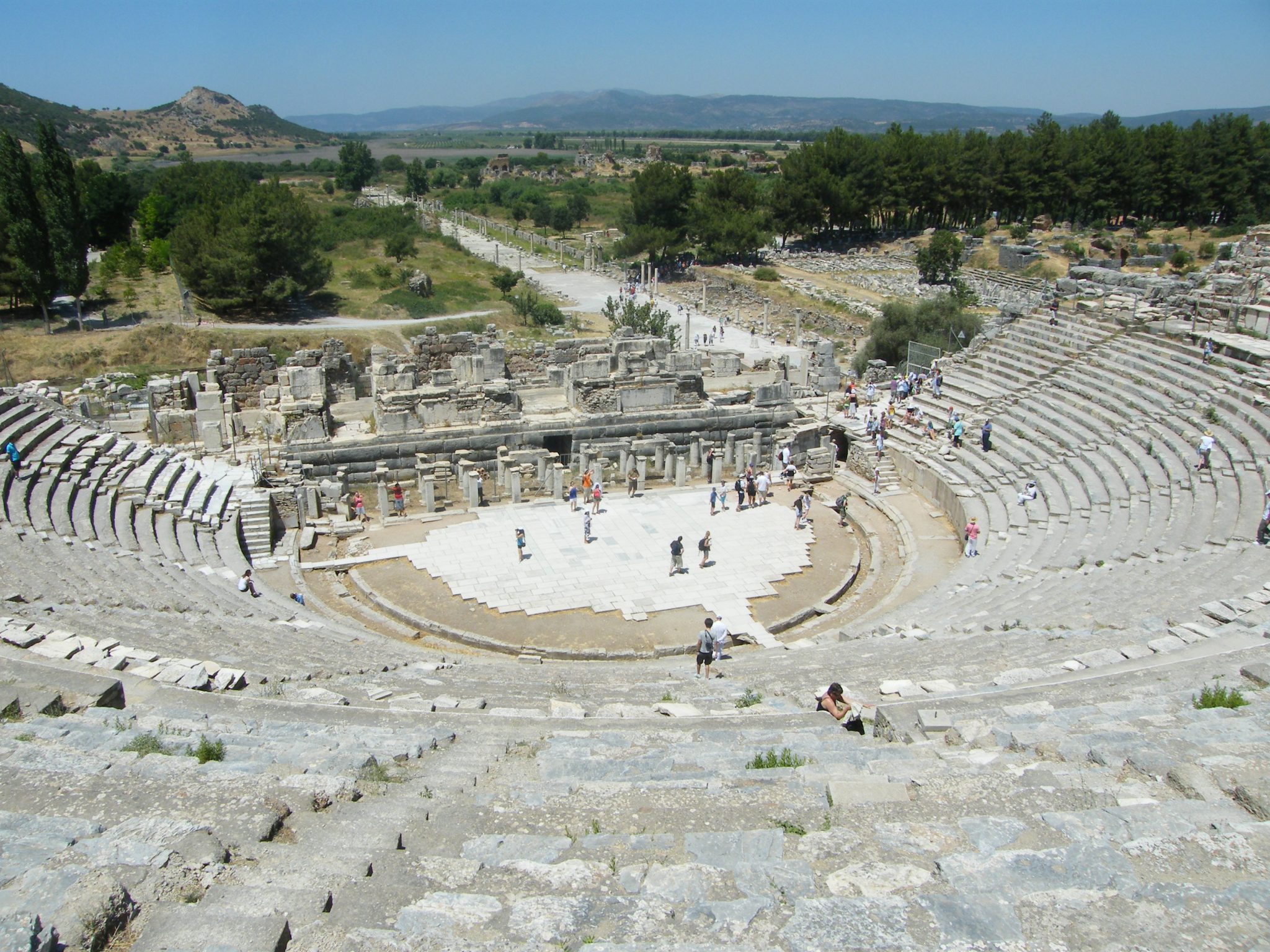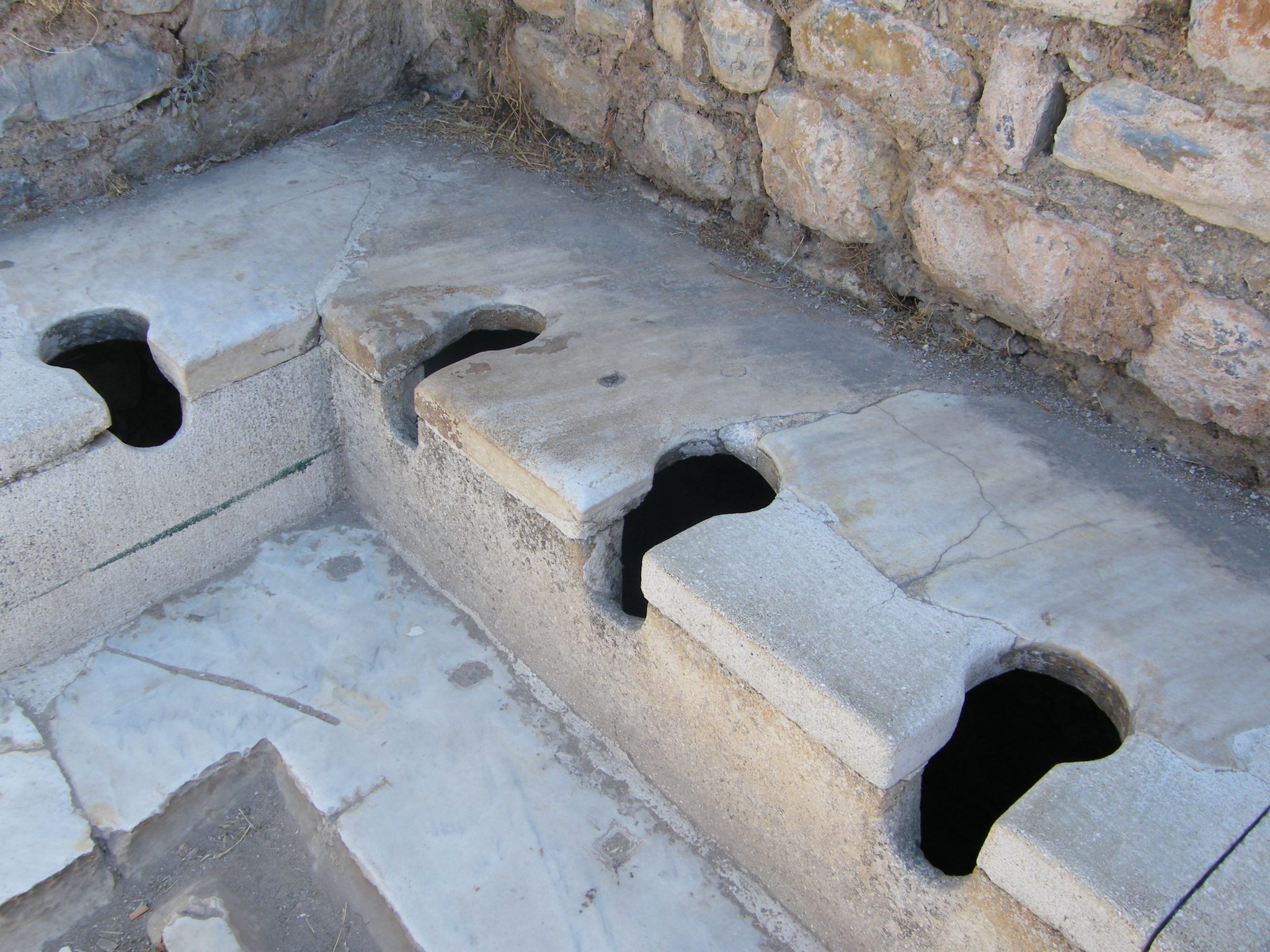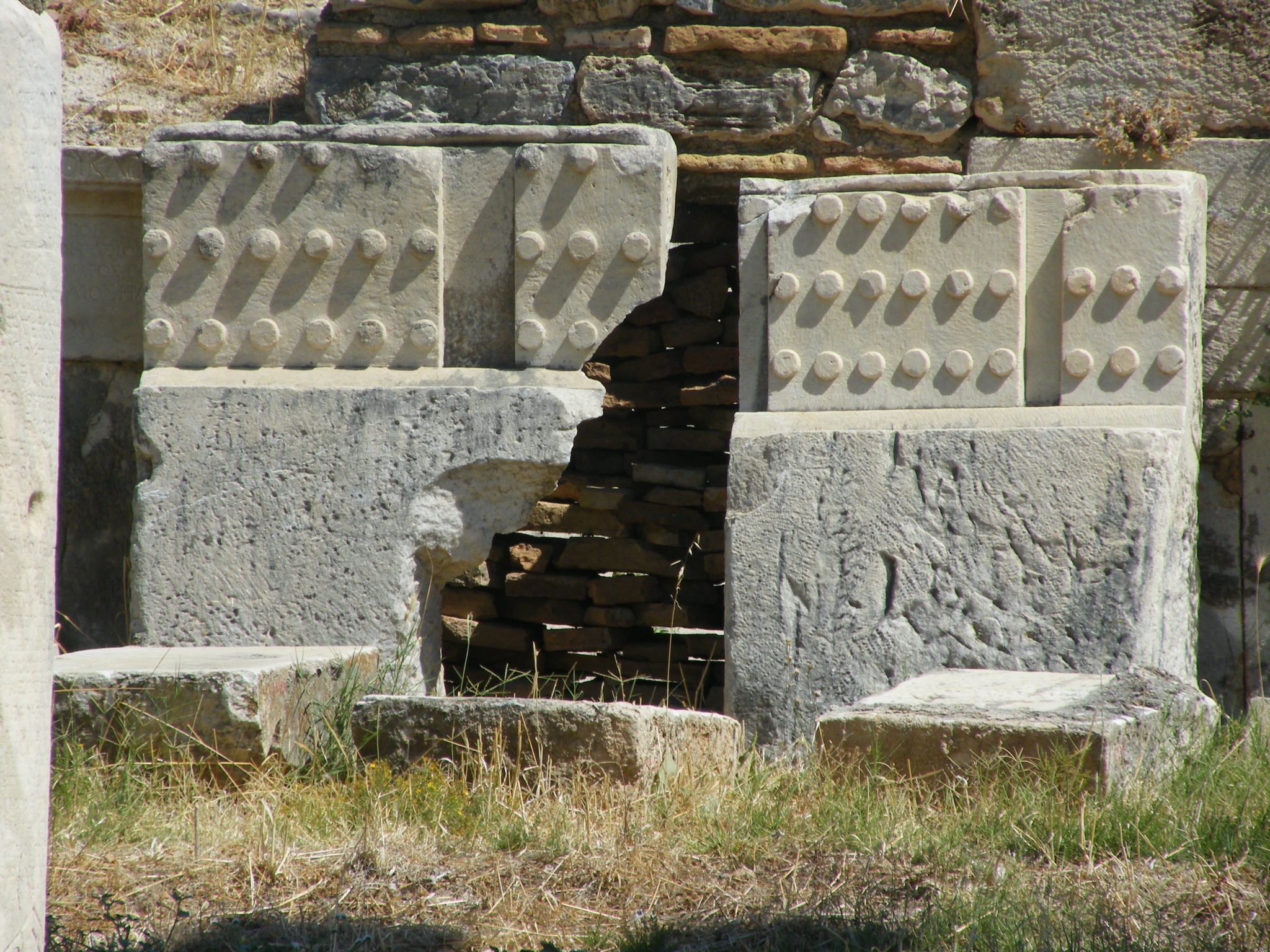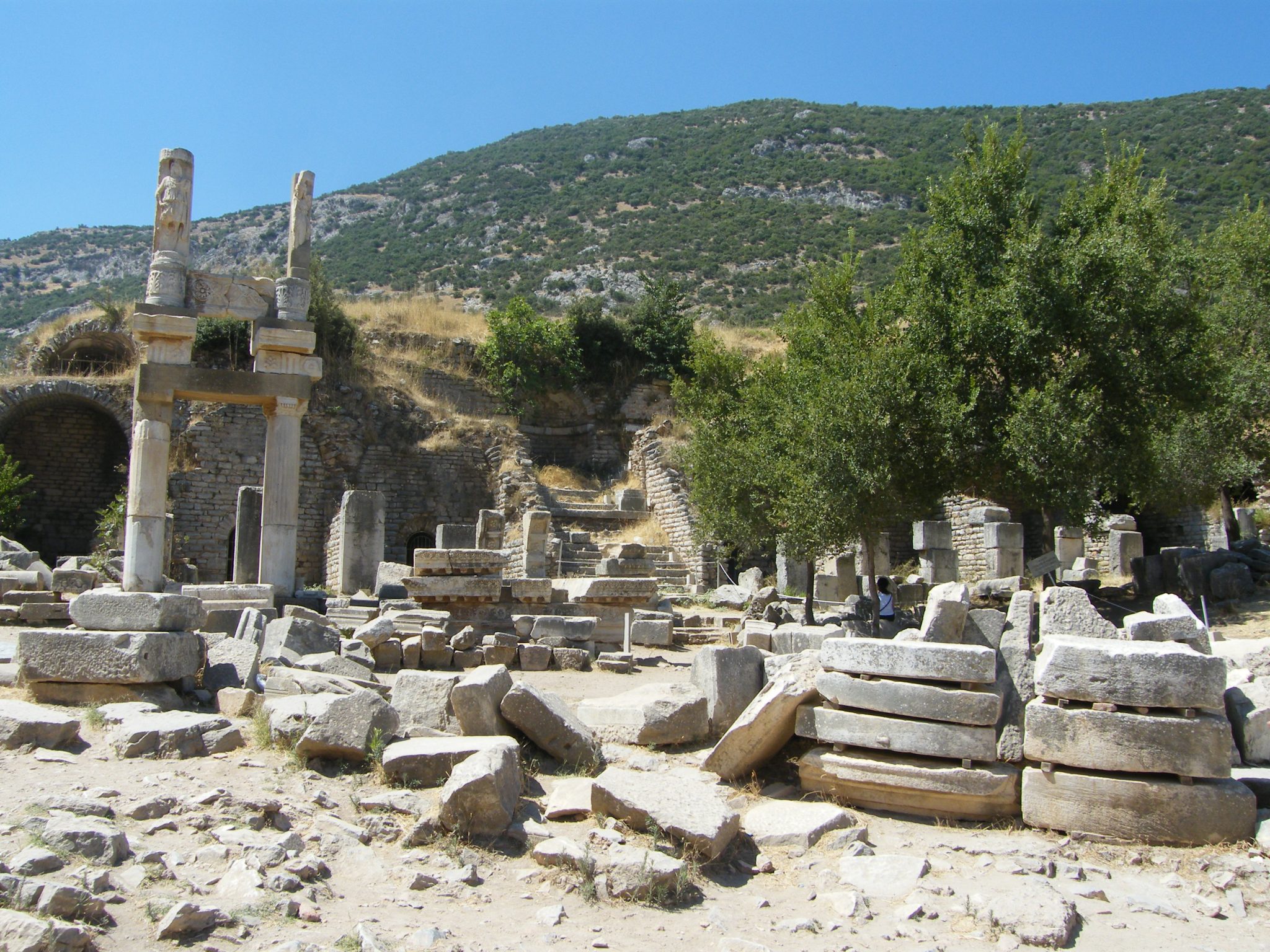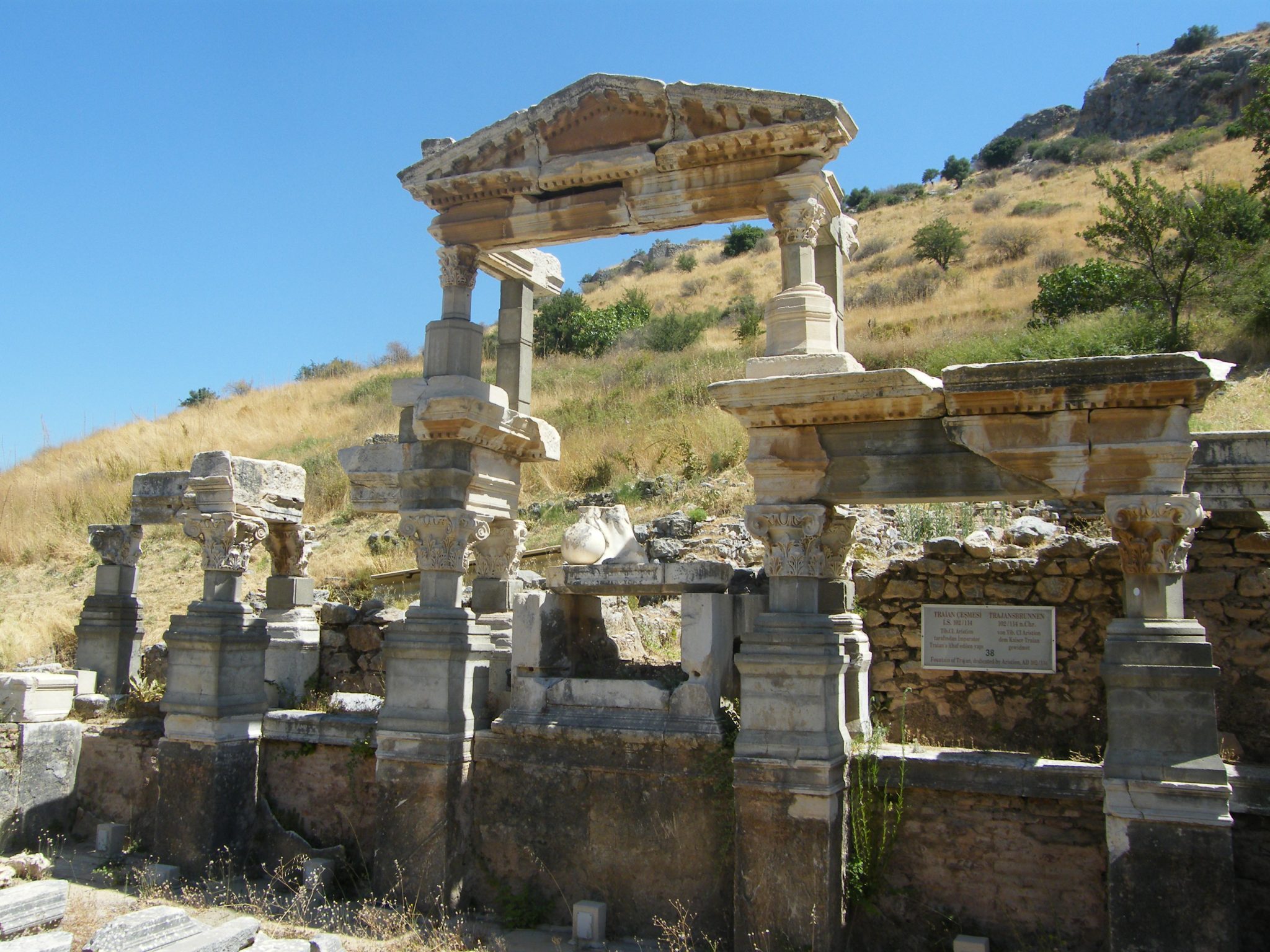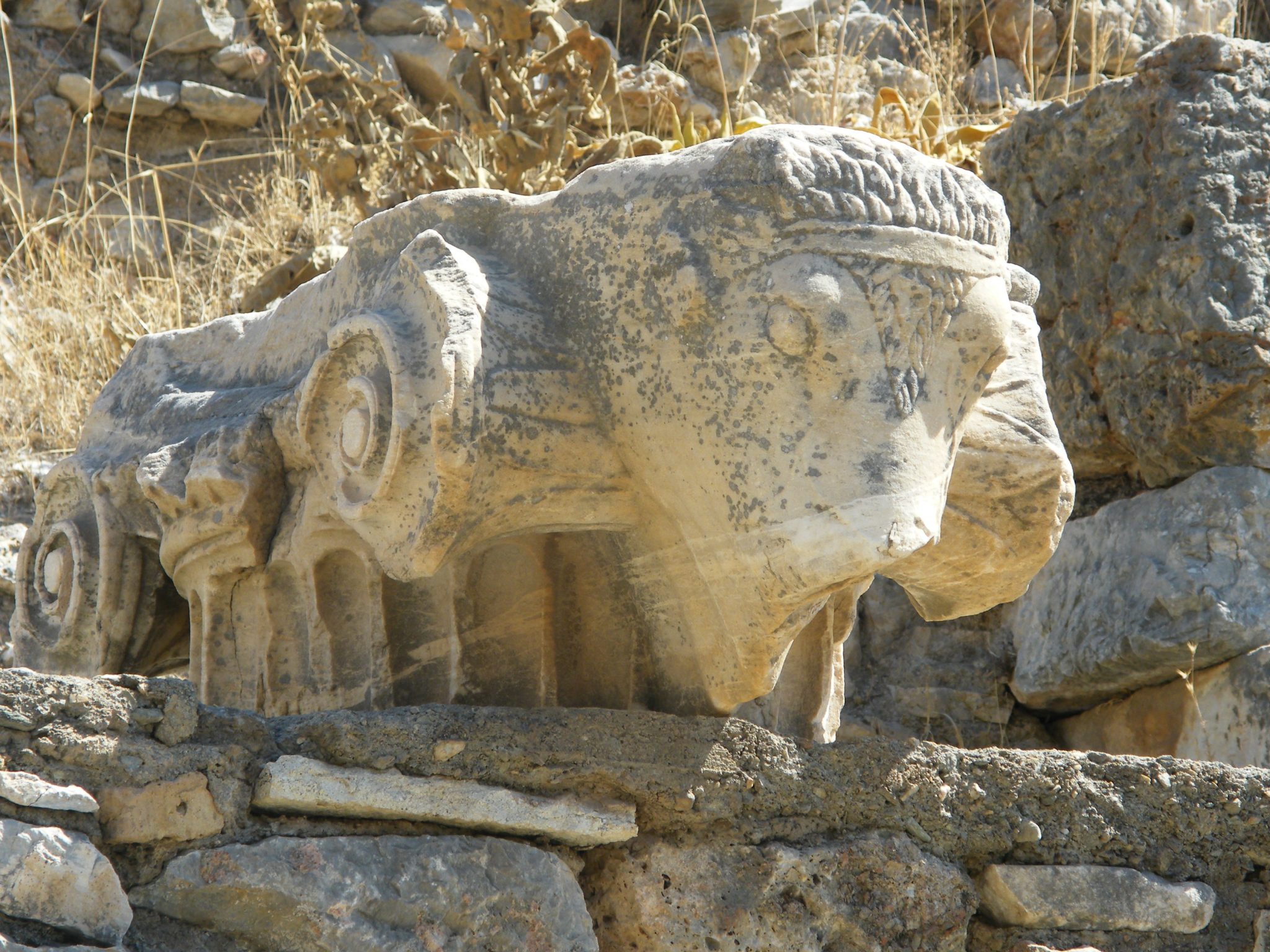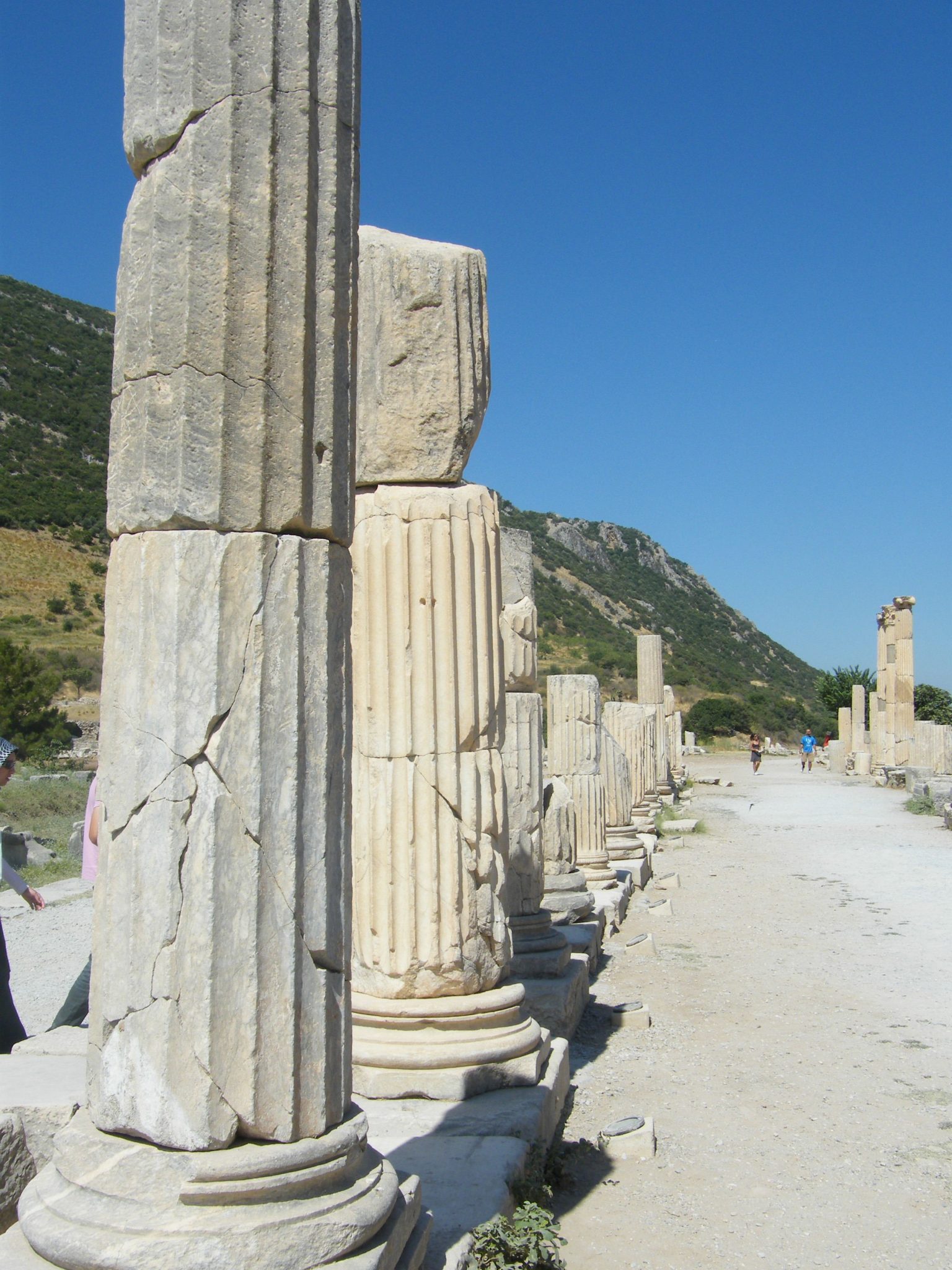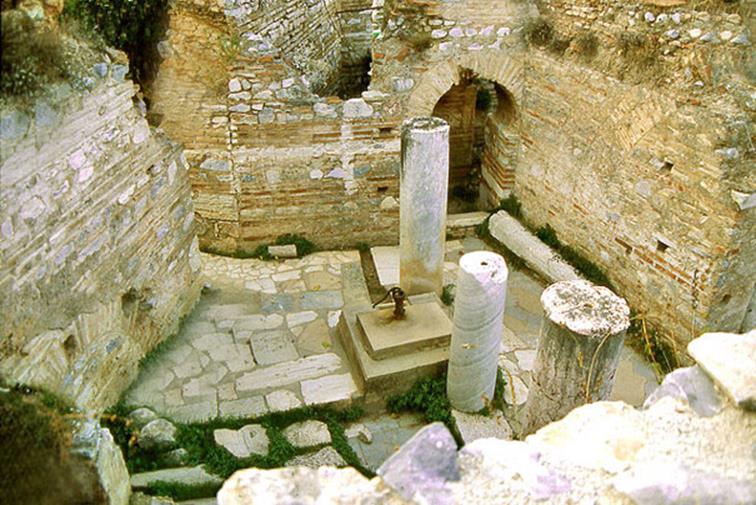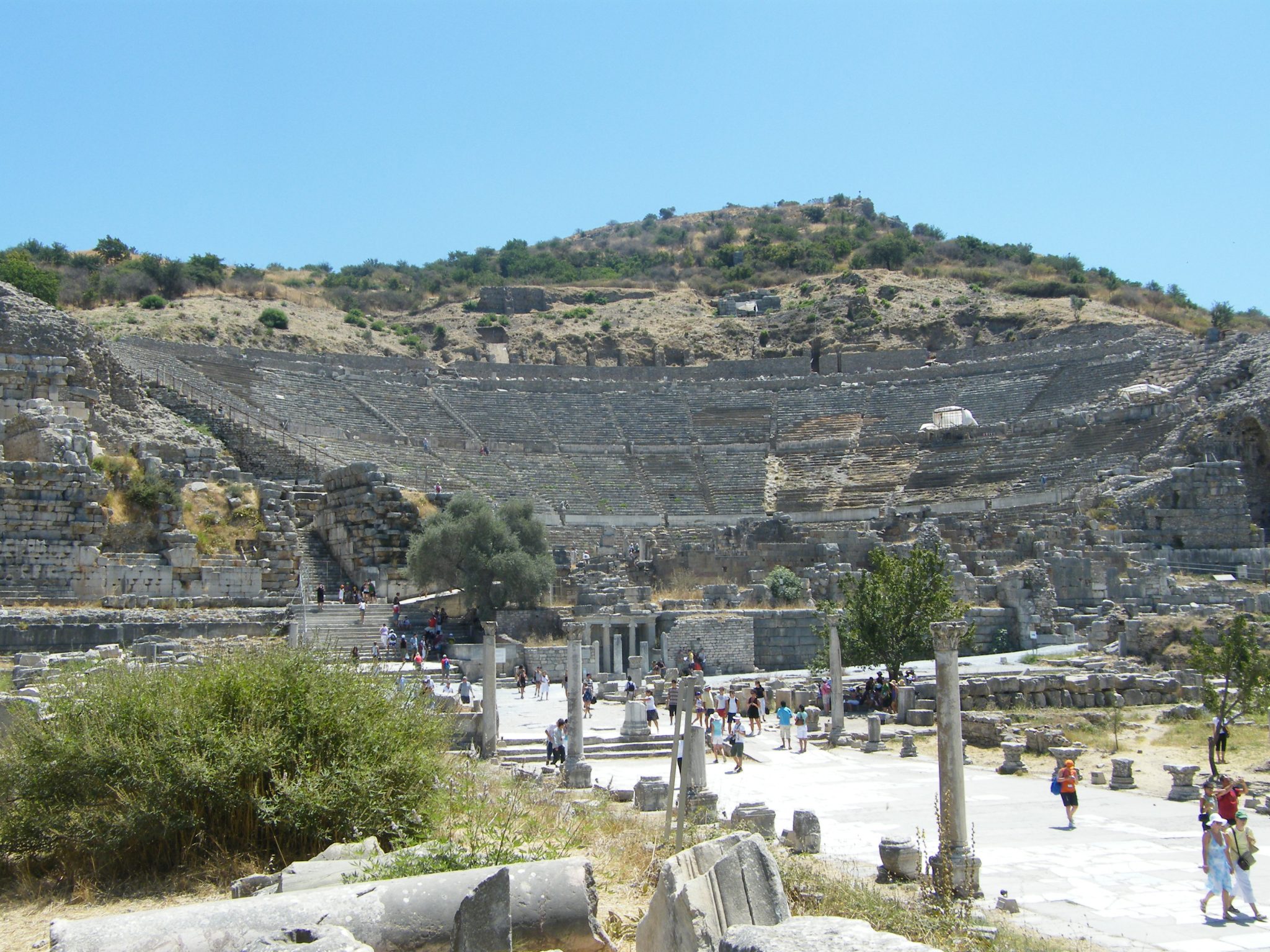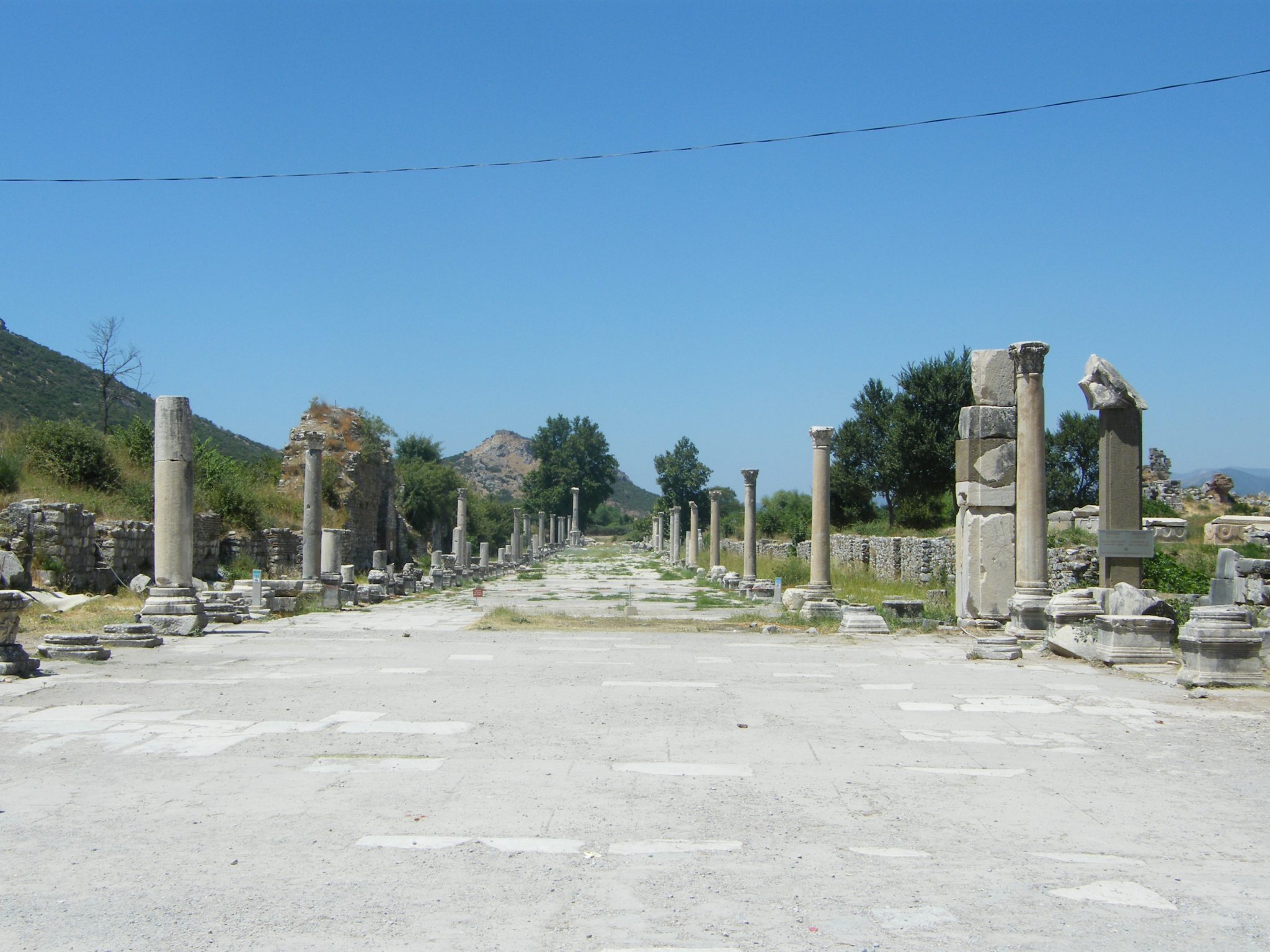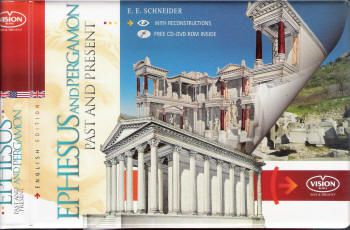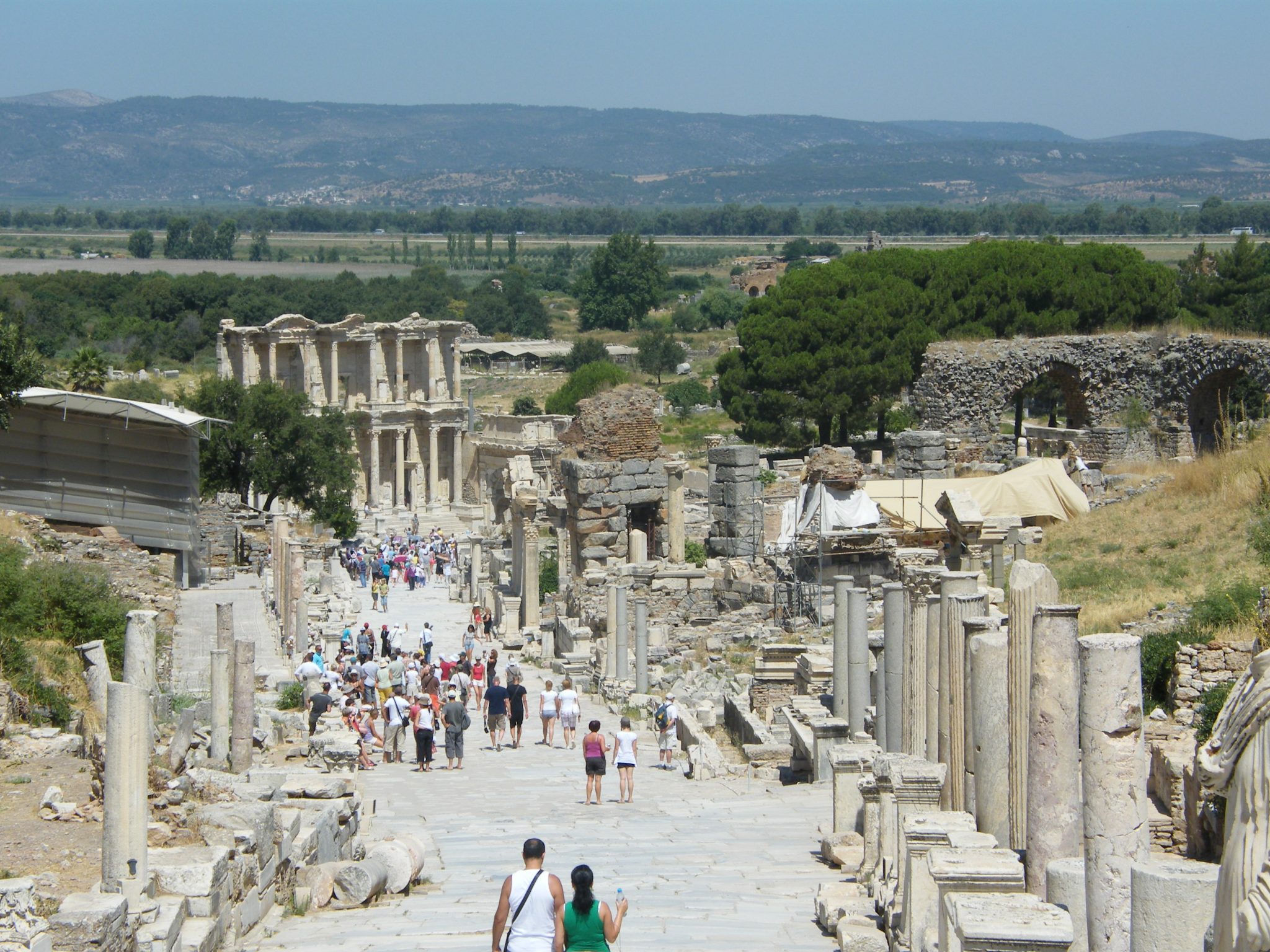
Its importance
Ephesus was the most important city in Western Asia Minor (modern Turkey) in New Testament times. In fact, it was called ’the mother city’ of Asia. It had an estimated population of around 200,000 – 250,000, which was huge for those days, and it rivalled Antioch, Corinth, Alexandria and even Rome itself. Its wealth and importance came from its location. It was situated on an inland harbour linked by a canal to the River Cayster which flowed into the Aegean Sea; and it was at the crossroads of major trade routes. So it was an extremely important commercial centre-in fact, the largest trading centre in Asia Minor, attracting people from all over the world. Strabo, the Greek philosopher, historian and geographer, called it ‘the greatest emporium in the province of Asia Minor’. So when Paul chose to plant a church here, he was choosing the key city in the region, from which he planned for the new church to reach out.
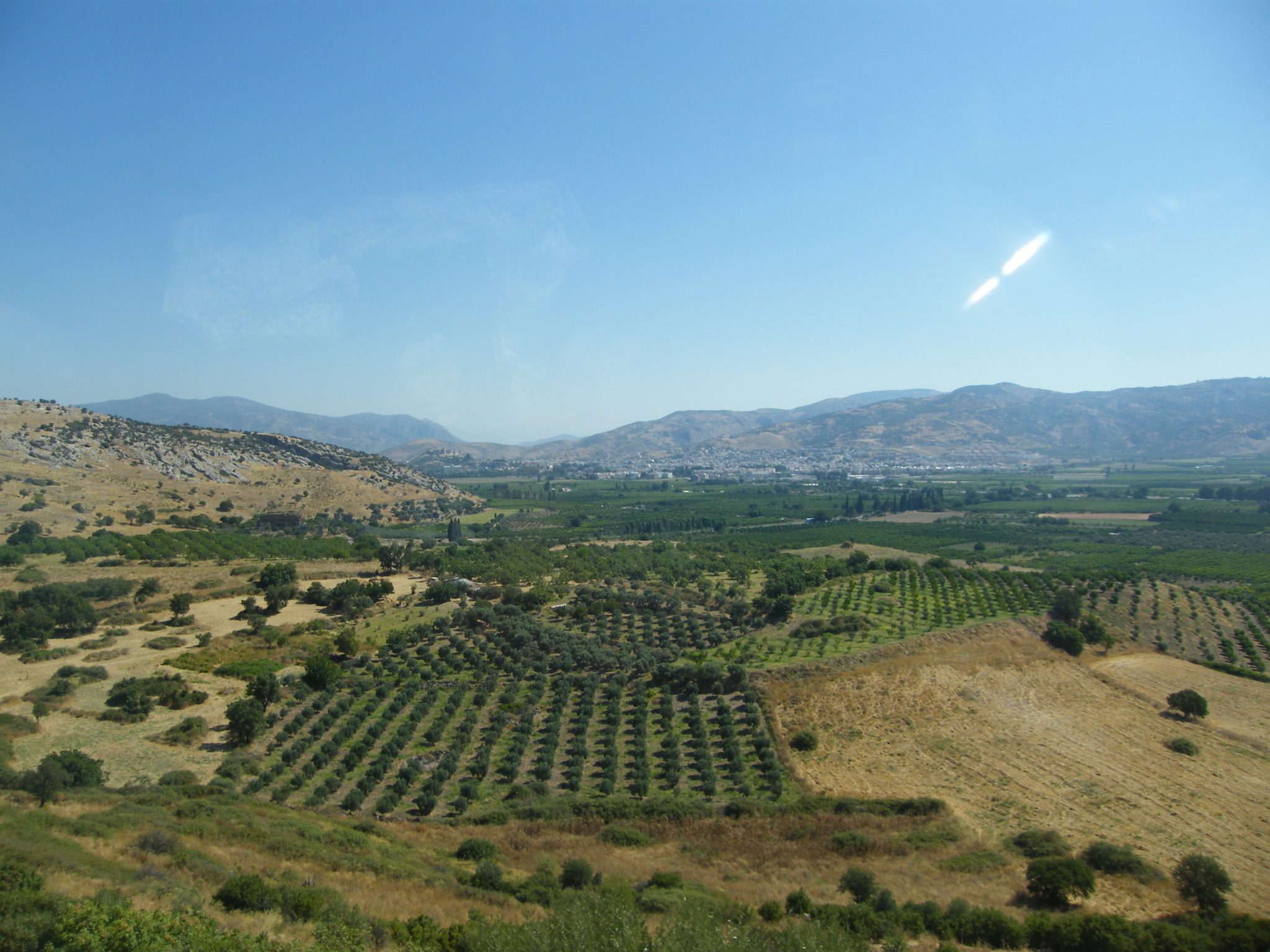
Its buildings
As befitted a leading regional city, Ephesus had many fine buildings, as its ruins still testify to today. It had at least two public squares or ‘agoras’, linked by Curetes Street with its monuments to leading citizens. One agora, designated for civic use, had a stoa, basilica and town hall; the other was designated for commercial use. The city had gymnasiums, theatres (one of them seating 25,000), a triumphal arch and a fabulous library (though this was only built after New Testament times). It had won the right to house the Temple of the Divine Julius (Caesar) and the goddess Roma, and had a huge temple to the Emperor Domitian (AD81-96). It had public baths and latrines, and many upper-class homes with beautiful frescoes. But the city’s greatest claim to fame didn’t lie in the realm of business or economics, but religion.
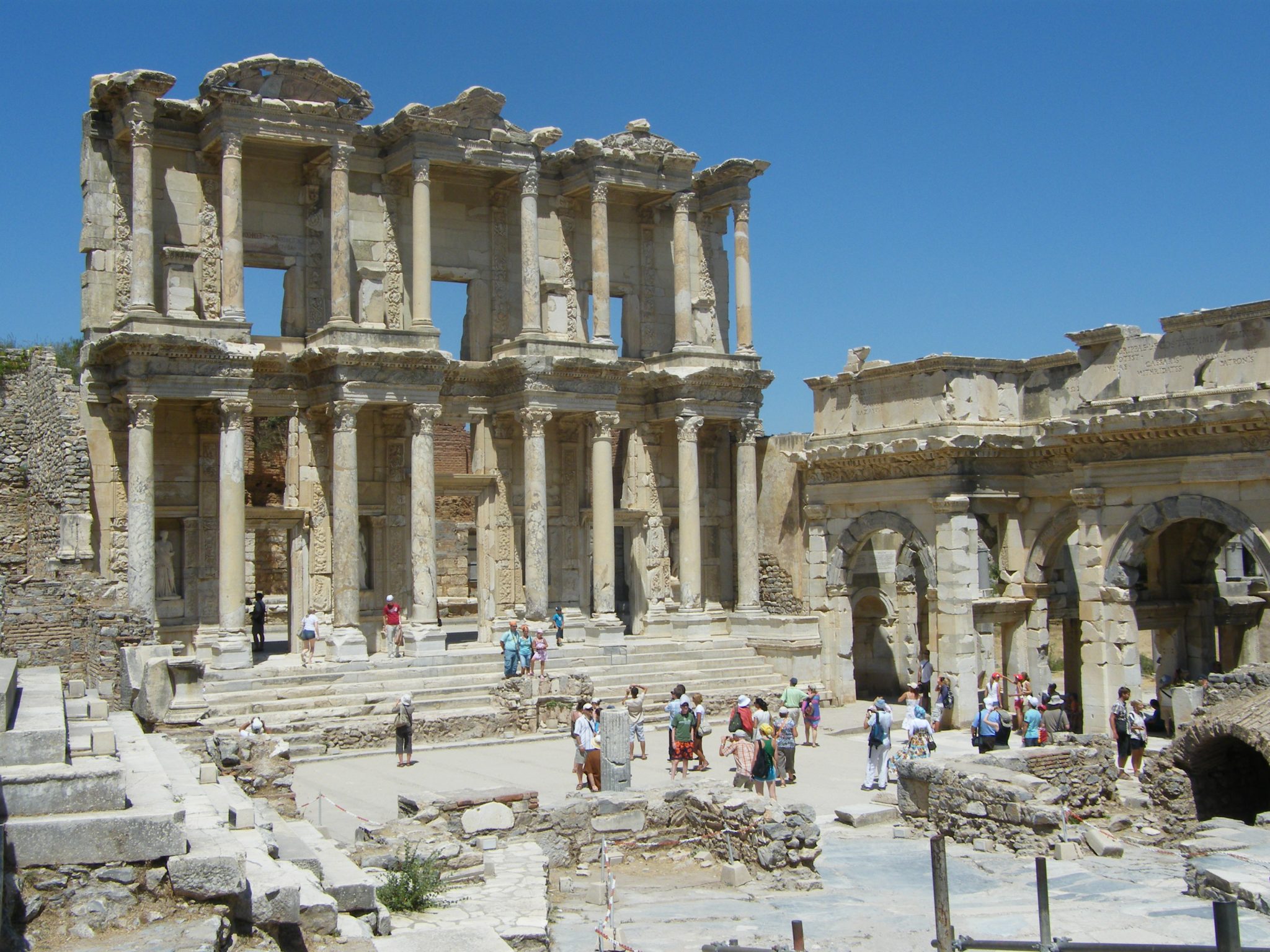
The temple of Artemis

The most important structure in Ephesus was a major temple to the Greek goddess Artemis (known in Rome as Diana), which was one of the 7 wonders of the ancient world and which people came from far and wide to see. It was 425 feet (130m) long and 220 feet (67m) wide, with white marble columns 62 feet (19m) high and just 4 feet (1.2m) apart. The temple was founded when her image-probably a meteorite-’fell from heaven’ (Acts 19:35). Initially this was marked with an idol carved from an oak tree, which a small village grew up around. But as Artemis became more and more popular, the site was marked with increasingly bigger temples dedicated to her, with her image standing in the inner sanctuary. Ephesus became known as ‘the guardian of the Temple of the great Artemis and her image which fell from heaven.’ It was a sacred site for over 1200 years.
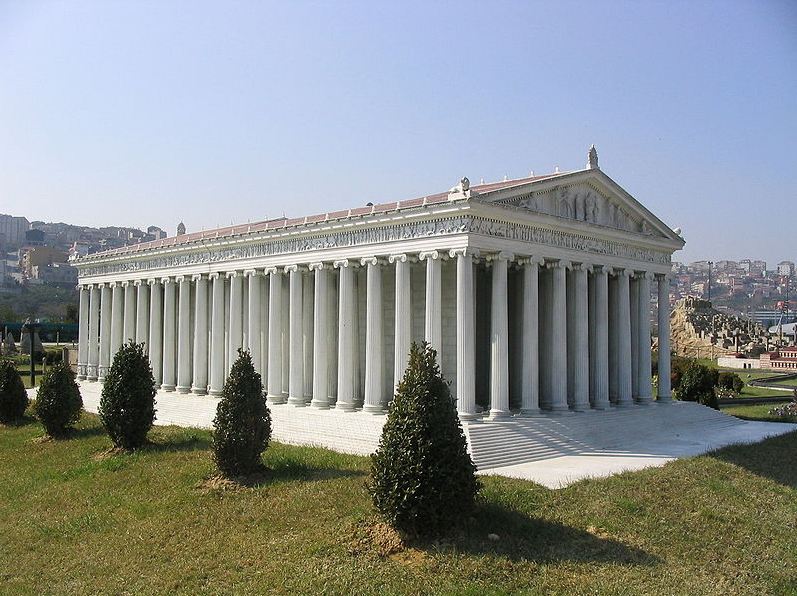
Photo: Zee Prime at cs.wikipedia
The cult of Artemis
In Greek and Roman mythology Artemis was the daughter of Zeus and the twin sister of Apollo. She was the goddess of the hunt and wild animals, as well as the goddess of women. She protected women in childbirth, protected young girls, especially their virginity, and brought relief to women in need. The Greek travel writer Pausanias said that she was the most worshipped goddess in private devotions in the Mediterranean world. Statues of Artemis had a stiff, long body with her legs bound (rather like an Egyptian mummy), and with many breasts, reflecting the fact that Artemis worship was a fertility religion, particularly as it was practised at Ephesus. She wore a necklace of acorns and a high crown, often topped with the turrets of the city of Ephesus. Her skirt was decorated with rows of animals, symbolic of her fertility. A eunuch priest served Artemis, assisted by virgin priestesses. This heavily-women-dominated religion may be part of the reason why Paul insists so much on women keeping their proper place in the church, and on men rising up to play their proper role in worship (1 Timothy 2:8-15). (Remember that, by the time Paul write to Timothy, Timothy was leading the church in Ephesus.)
As a fertility goddess, ritual prostitution played an important part in the worship of Artemis. So, from a Christian point of view, the temple was an exceedingly immoral. Worship also included many secret rituals or ‘mysteries’, portraying birth and death-hence Paul’s repeated use of the word ‘mystery’ in his letter (Ephesians 1:9; 3:3, 4, 6, 9; 5:32; 6:19). The difference was that whereas their ‘mystery’ was hidden and secret, revealed only to the special few, Paul says that God’s ‘mystery’ has now been made fully known in Jesus-to everyone!
Religion and economics
But the temple wasn’t just about religion; it was also about business–big business! There was a guild of silversmiths who made little silver shrines and copies of the stone that fell from heaven. Clearly they made a good living out of it; because when Paul began to preach about Jesus and people started responding to the gospel, they were afraid that it might affect business and so stirred up a riot (Acts 19:23-41).
But Artemis affected more than the livelihood of a guild of silversmiths. She affected the whole of the city’s life. In fact, her temple served as the city’s main bank, and thousands of temple servants were entrusted with looking after the fortunes that people entrusted to them. Artemis’ image was also on their coins, and festivals and games held in her honour. So to challenge Artemis, like Paul did, was to challenge the whole social and economic order. But that is what the gospel is meant to do!
Ephesus and the church
Paul saw Ephesus as such a key city that he spent three years there, with the result that ‘all the Jews and Greeks who lived in the province of Asia heard the word of the Lord’ (Acts 19:10, 26). He established Ephesus as his regional apostolic base, and it became a major centre of the Christian faith. Sadly, it seemed to sit back on its laurels eventually, and the first love and passion of the church had waned by the late first century AD (Revelation 2:1-7).
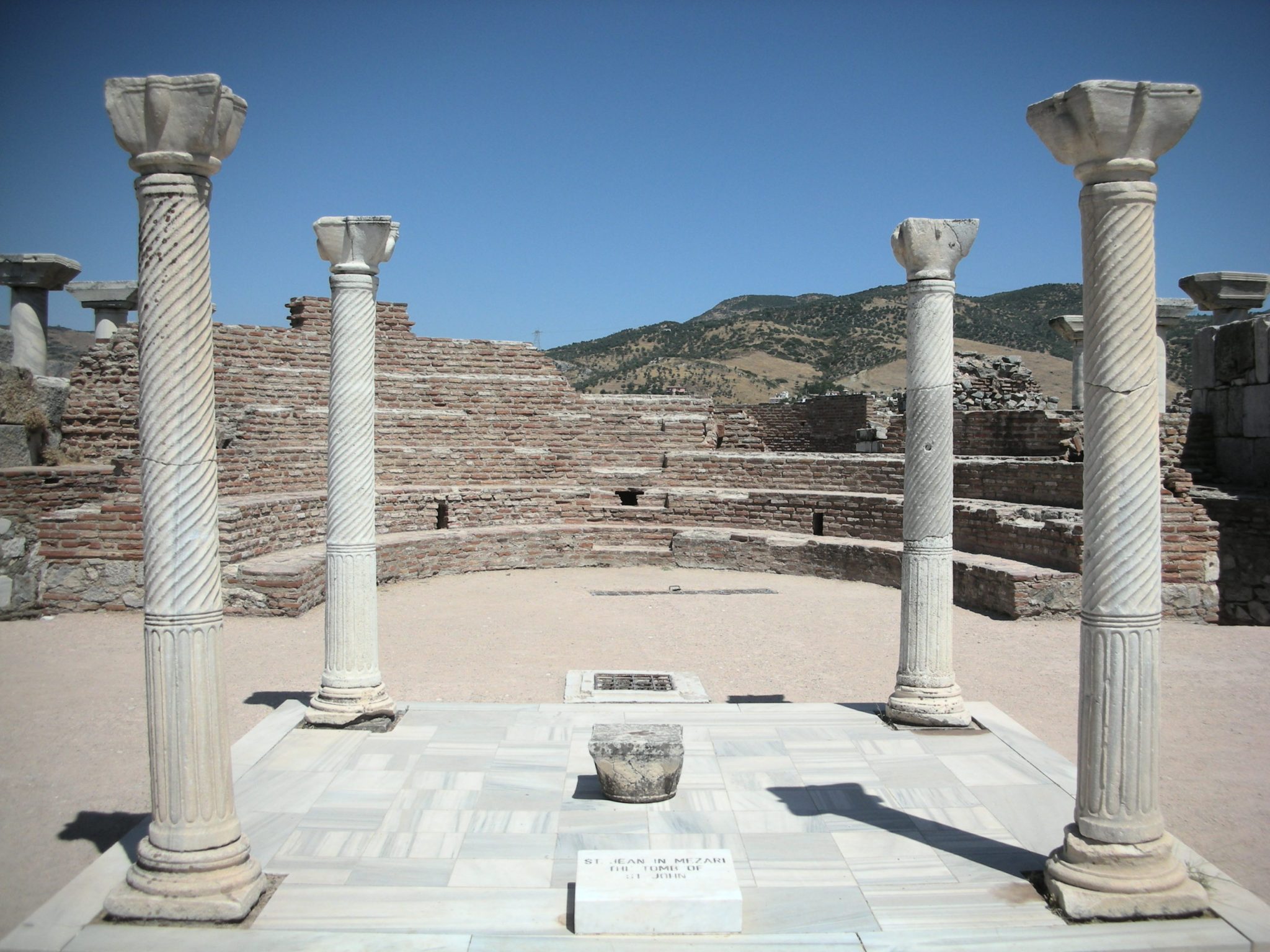
Early church tradition links John the Apostle with Ephesus and it is said that he spent his final years here. When he wrote Revelation, he was in exile on Patmos (Revelation 1:9), which was a tiny island some 50 miles south-west of Ephesus, so it is entirely possible. According to other early church traditions, Jesus’ mother Mary also ended up here, having been entrusted to John’s care by Jesus (John 19:25-27).
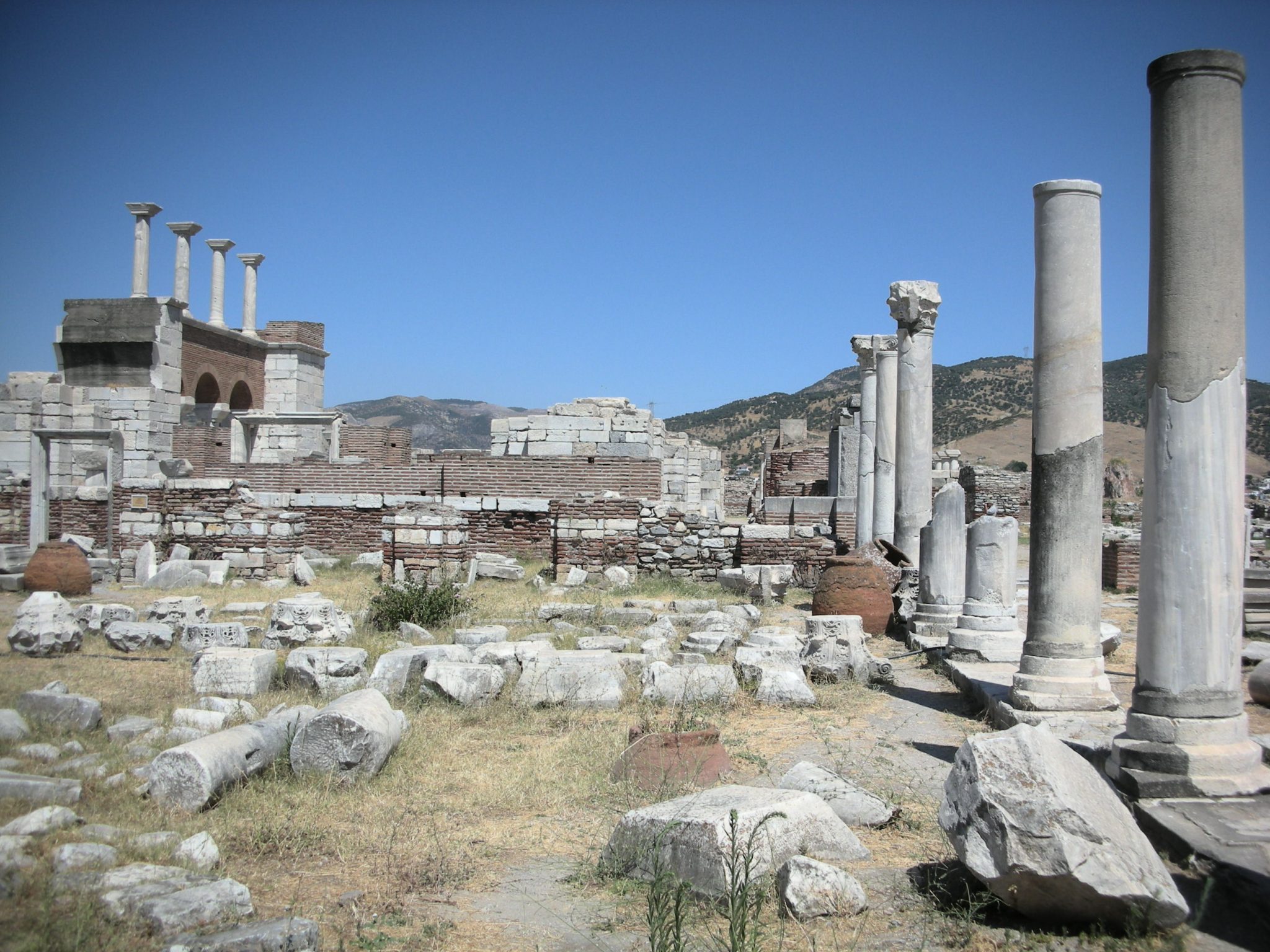
Several church councils were held here in the first five centuries AD, including the important Council of Ephesus of AD 431. But as the River Cayster silted up, Ephesus ceased to be a port and its importance diminished. Several earthquakes led to the city being gradually abandoned, and its stones were gradually taken away for buildings elsewhere, leaving only the ruins that are there today. It seems Artemis wasn’t so great after all!
Recommended book
Schneider, Eugenia Equini (2010) Ephesus and Pergamon – Past and Present, Hollandaca, ISBN-13: 978-8881622436
a good book that includes artists’ impressions showing what the original structures may have looked like.
Mike Beaumont (April 2017)
All photographs used in this article are copyright © Mike Beaumont, unless otherwise stated. No photograph attributed to Mike Beaumont may be used in any written or electronic publication without prior written permission.
Appendix – More Photos
